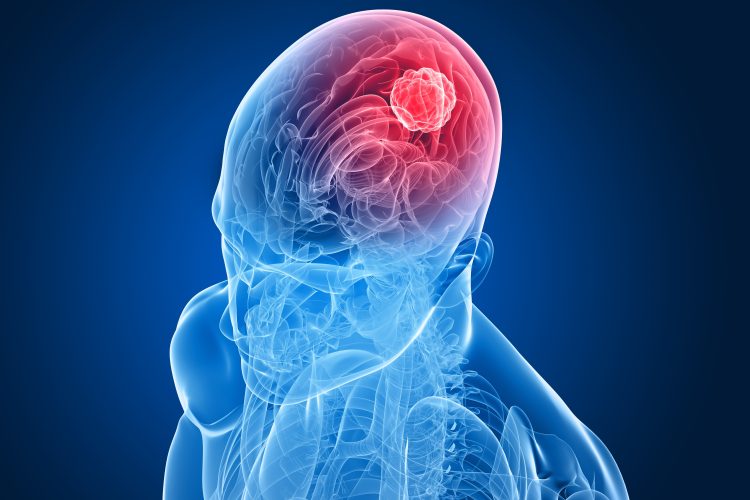Scalable precision design targeting complex product profiles
Posted: 6 March 2024 | Dr Víctor Sebastián Pérez (Exscientia), Ellen Capon (Drug Target Review) | No comments yet
We had the privilege of speaking to Dr Víctor Sebastián Pérez, Associate Director of Computational Drug Design, following his presentation at ELRIG UK 2023. He shares his insights into how Exscientia is using AI to design drug candidates for cancer treatment.

What are the specific mechanisms through which LSD1 inhibition leads to tumour cell death?
LSD1 acts as an epigenetic modifier but also forms a variety of complexes with transcription factors, promoters, activators, corepressors and non-coding RNA. Mechanisms that drive differentiation in cancer cells offer an opportunity to target cancer stem cells in combination with a cytotoxic agent. Based on preclinical data, we expect broad opportunities in haematology and oncology for LSD1 inhibitors, pointing towards potential efficacy in SCLC and AML in combination with standard of care treatments.
Regarding AML, LSD1 inhibition promotes cell differentiation by blocking the growth-factor independent repressor complex leading to acetylation of key promoters. This results in the induction of leukaemic blast cell differentiation which can slow or stop the expansion of tumour cells.
Moreover, in SCLC, LSD1 suppresses neuroendocrine features (eg ASCL1) through upregulation of NOTCH signalling which in turn promotes differentiation into quiescent cancer cells. These quiescent cells can be sensitised to combinations with cytotoxic agents or checkpoint inhibition.
How does the precision design of LSD1 inhibitors maximise the therapeutic window, and what strategies are used to achieve tight control over the duration of inhibition?
With regard to target toxicity associated with LSD1, irreversible inhibitors, regardless of dosing frequency, require resynthesis of the LSD1 protein before its normal functions resume and are predicted to have an inferior therapeutic index. For compounds with a long half-life, similar effects to irreversible compounds are expected.
We believe we have precision designed the first molecule to combine reversibility and a shorter half-life with appropriate CNS penetrance. As a reversible LSD1 inhibitor candidate, when coupled with intermittent dosing, EXS74539 (‘539) is expected to reduce on-target toxicity. This is anticipated to translate to improvements in therapeutic index and reduced depletion of platelets/neutrophils.
Given the relevance of brain metastases in cancer patients, what are the pharmacokinetic properties that enable CNS penetration of LSD1 inhibitors?
A high proportion – around 50 percent – of patients with SCLC are observed to develop brain metastases during the course of the disease. With ‘539, we have been able to demonstrate effective brain exposure by optimising the molecule based on Kpuu parameters such as good passive permeability, low transporter liabilities and relevant physchem properties. The brain exposure of this molecule is then expected to enable the targeting of primary and secondary malignancies in the brain, in this patient cohort.
How does the precision design of ‘539, with an evolutionary algorithm and 2D and 3D models, lead to its unique property profile and efficacy in vivo?
It was certainly an ambitious and challenging design project with the aim to be the first potent, selective, reversible and brain penetrant LSD1 inhibitor with potential in both haematology and solid tumours. Driven by our 3D generative algorithms, in combination with our expert drug hunters, and guided by our pipeline of models and 2D generative approaches, we designed ‘539 through iterative design and learning cycles. We optimised the profile of the chemical series by simultaneously addressing multiple critical endpoints and balancing requirements in terms of potency, safety, CNS penetration and ADME profile (bioavailability, half-life, metabolism etc), aiming to solve a complex target product profile and to overcome these design challenges.
LSD1 demethylates histones which play a critical role in regulating the expression of genes that suppress differentiation and drive the proliferation and survival of several tumour types.
To date, other LSD1 inhibitors in development have failed to achieve the combination of appropriate pharmacokinetics, required brain penetrance and a reversible mechanism of action. We believe that Exscientia’s candidate ‘539 achieves a design objective of suitable CNS penetration to target brain metastases, which are prevalent in certain cancer subtypes.
How does the reversible and shorter half-life of ‘539 benefit on-target toxicity management and what are the specific effects on platelet depletion observed in the mouse efficacy study?
LSD1 is involved in haematopoietic homeostasis. Both irreversible inhibition and long-acting inhibitors of the target leads to a reduction in platelet levels. We expect that the reversible nature and shorter half-life of ‘539 may allow for effective intermittent dosing enabling platelet levels to recover between doses, while maintaining efficacy. This contrasts with covalent inhibitors, where the irreversible nature of the molecules would lead to dosing at lower levels to reduce on-target toxicity.
About the author
 Dr Víctor Sebastián Pérez, Associate Director of Computational Design, Exscientia
Dr Víctor Sebastián Pérez, Associate Director of Computational Design, Exscientia
Dr Víctor Sebastián Pérez currently serves as Associate Director, Computational Design at Exscientia. He earned his BSc and MSc in Pharmacy, and PhD in medicinal chemistry focused on drug discovery for infectious diseases using ligand and target-based approaches at the Spanish National Research Council (CSIC) and Universidad Complutense (UCM) completing part of his research at the University of Cambridge and Universidad Nacional del Sur (UNS). During this time, Victor participated in multiple CNS and infectious diseases projects including a European Consortium with public and private entities aiming at targeting neglected parasitic diseases.
Victor joined Exscientia in 2019 where he has led the computational design strategy for several drug discovery programs, including LSD1, and applied AI tools to advance drug discovery programs at different stages towards lead optimisation and the identification of potential drug candidate compounds in oncology, immuno-oncology and rare diseases areas.
Victor has received several awards from scientific societies and pharmaceutical companies, including the European Federation of Medicinal Chemistry (EFMC), Spanish Society of Medicinal Chemistry (SEQT), Menarini, Royal Spanish Society of Chemistry (RSEQ) and Eli Lilly.
Related topics
Artificial Intelligence, Cancer research, Central Nervous System (CNS), In Vivo, Oncology, Precision Medicine
Related conditions
Brain cancer, Cancer Research
Related organisations
Exscientia







